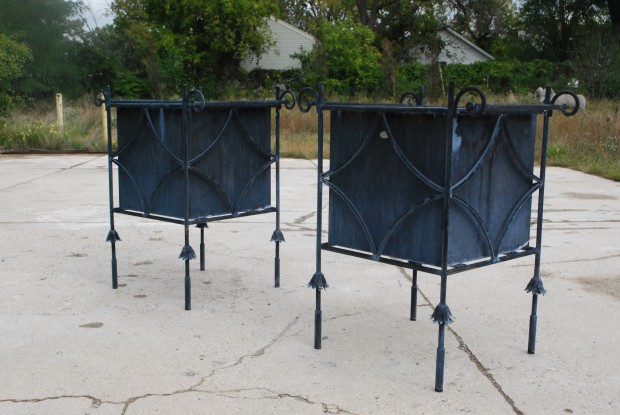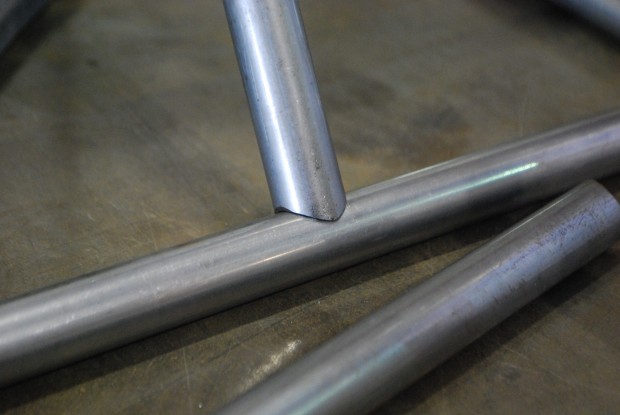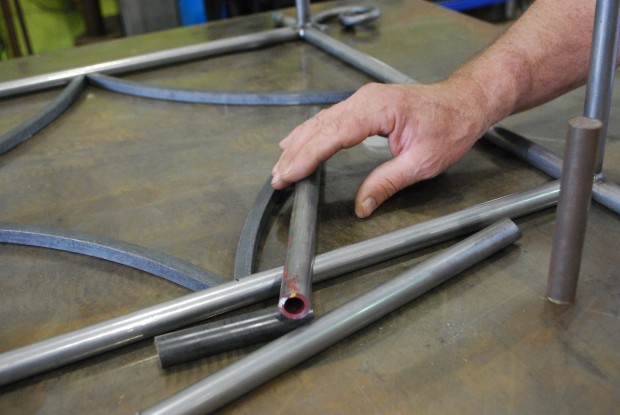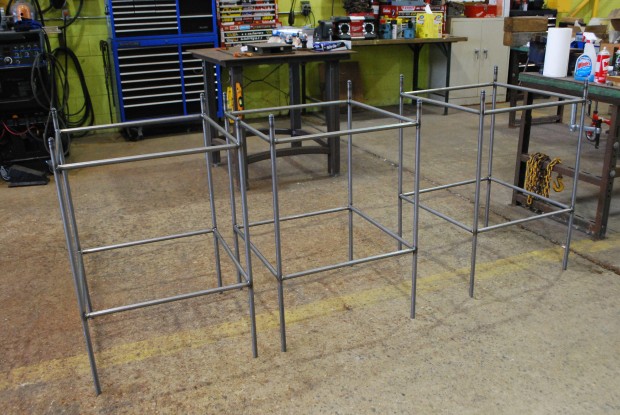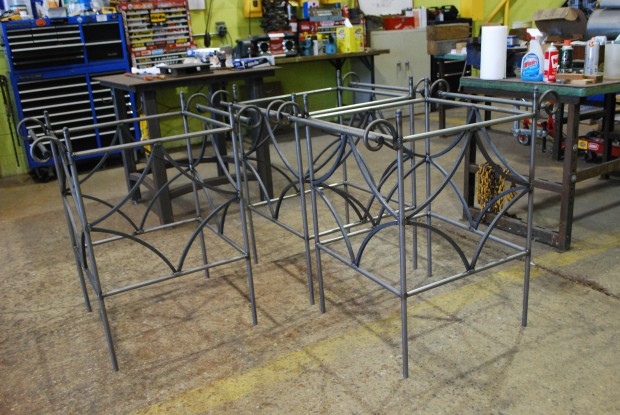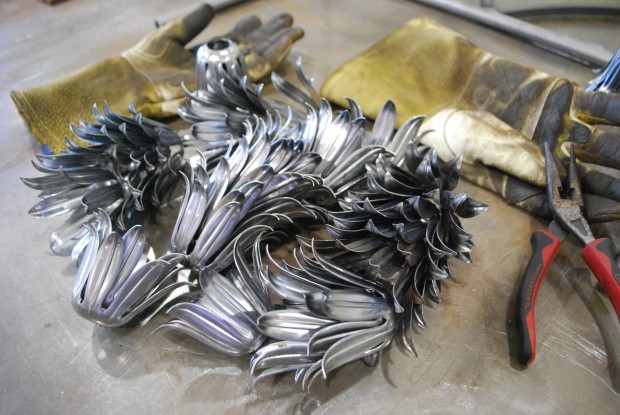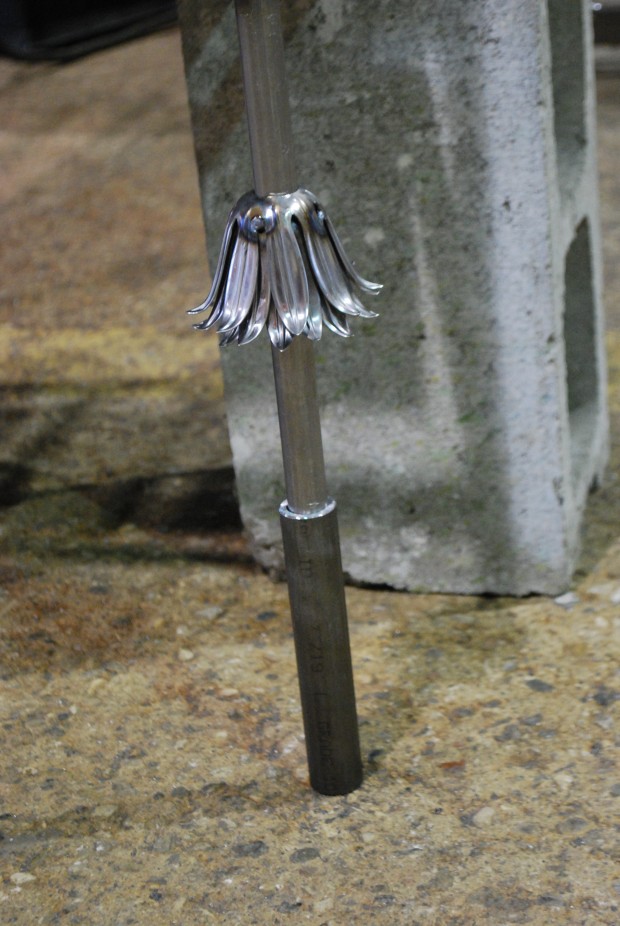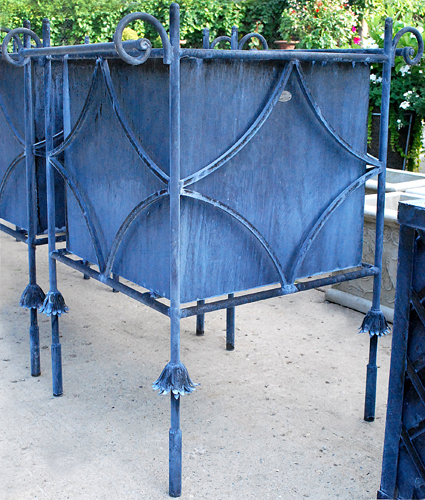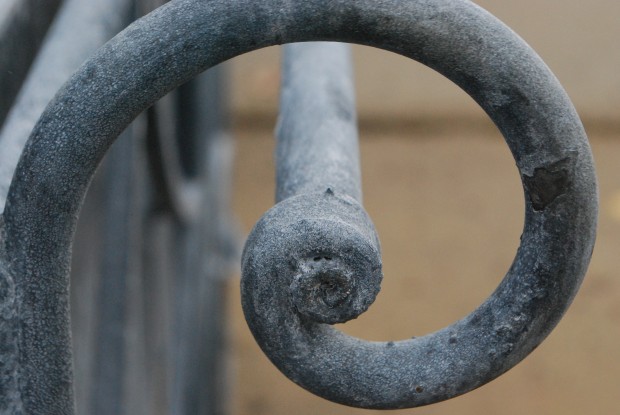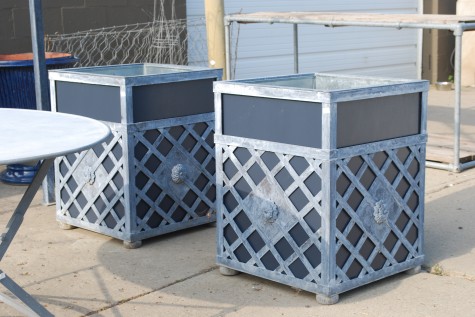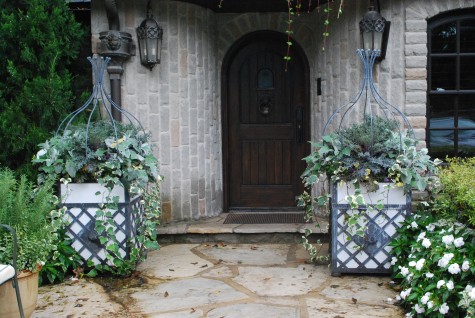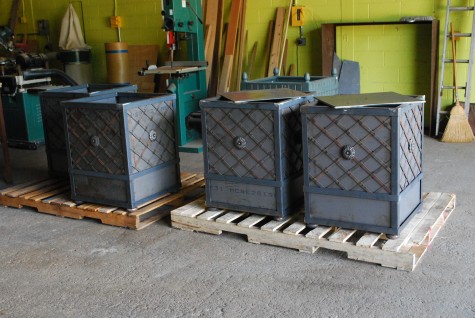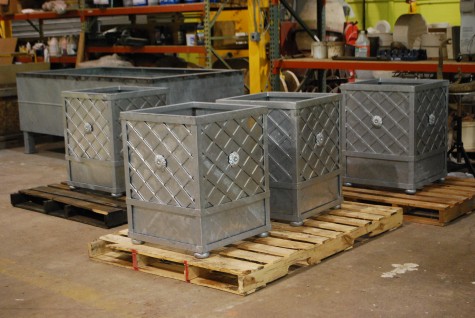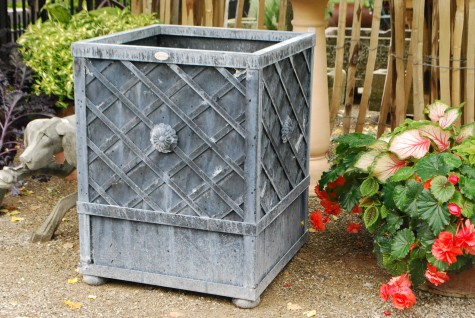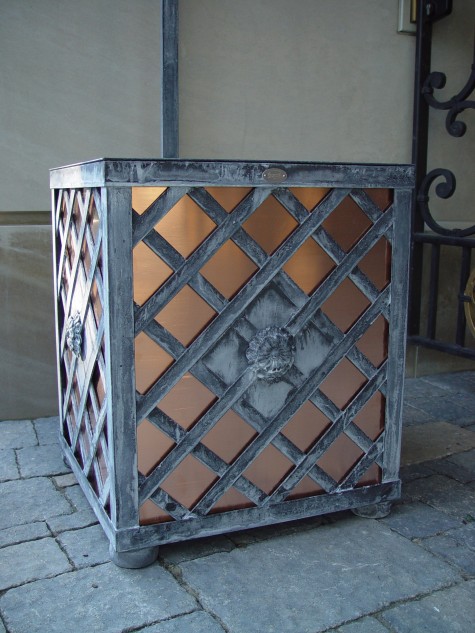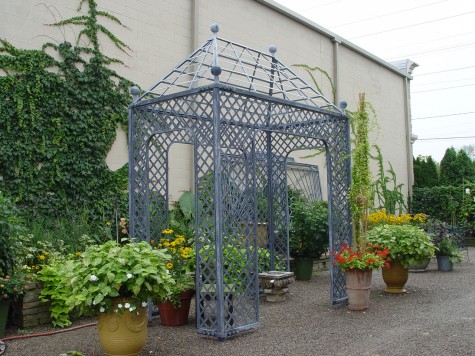I am so very pleased that one of our Branch boxes is featured in an article written by Marian McEvoy in this weekend’s Wall Street Journal. Even though I have already written about it on the Detroit Garden Works facebook page, there is a story behind the design, development and fabrication of a container for a garden that might be of interest.
First off you need a building-a studio. That studio needs tools both big and little. A few five ton bridge cranes have turned out to be very helpful. But most of all you need people who can turn an idea into an object. I have always wanted to design and fabricate beautiful containers and ornament for the garden. A container that can withstand any climate or season, from the salt air in Florida to the heat in Texas and the cold in Minnesota, is a container that can provide many years of service. Given that lead, that classic material for garden ornament, sculptures and containers has become incredibly costly, steel with a finish that brings the color of lead to mind seemed like a good idea. The Charisse box is not so easy to fabricate. The frame and handles are made of both tubular and solid round lengths of steel. Welding one section to another requires a lot of cutting and precise fitting. Sal, Dan and Buck fabricate for Branch, but these were Buck’s to make.
Each box is assembled from a lot of pieces that need to be cut fairly close to perfect. Mistakes in the length and angles of a piece, times many pieces, can add up to a box that bears no resemblance to square. The only square stock in the frame is a diamond, welded from curved lengths of steel. Buck’s other boxes have a simple and solid design. I was interested in making one box that was a more graceful. Making steel look graceful is not so easy.
It took quite some time just to get the frame together, square and true. Since the original Charisse boxes were made in 2005, changes have been made. Though Buck does multiple CAD drawings for everything he builds, the finished box tells the tale. Certain dimensions have been altered. It takes more time than I ever thought it would to get the size and proportion of a box just where it should be
The scrolled steel handles and diamonds came next. The tops of the tubular steel has small steel shperes welding to them as a finishing touch. Steel straps are welded to the bottom of the frame, to hold the steel box that would slip inside the frame.
The legs have an inverted flower detail. Each leg has several of them welded together, for strength.
The bottom of the leg has a sleeve of thicker and larger steel, for stability. This is a very heavy box, supported by very slender legs.
There are plenty of details, and lots of curves.
handle detail
snail scroll handles
the Branch Studio tag
The article is a very interesting and well written discussion of containers in the garden, and garden containers that will withstand fall and winter weather. Containers filled with plants in the landscape in all of the seasons sounds appealing. Something in the landscape to look at besides snow on the ground and gray skies is a good plan. That Buck’s Charisse box would be on her list of beautiful and weather-worthy containers -all of us are really thrilled about that.
WSJ.com – Hot Pots For the Chilly Lot
